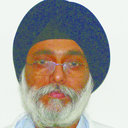A simple method for accurate estimation of apoptotic cells.
Atslēgvārdi
Abstrakts
A simple, sensitive, and reliable "DNA diffusion" assay for the quantification of apoptosis is described. Human lymphocytes and human lymphoblastoid cells, MOLT-4, were exposed to 0, 12.5, 25, 50, or 100 rad of X-rays. After 24 h of incubation, cells were mixed with agarose, microgels were made, and cells were lysed in high salt and detergents. DNA was precipitated in microgels by ethanol. Staining of DNA was done with an intense fluorescent dye, YOYO-1. Apoptotic cells show a halo of granular DNA with a hazy outer boundary. Necrotic cells, resulting from hyperthermia treatment, on the other hand, show an unusually large homogeneous nucleus with a clearly defined boundary. The number of cells with apoptotic and necrotic appearance can be scored and quantified by using a fluorescent microscope. Results were compared with other methods of apoptosis measurement: morphological estimations of apoptosis and DNA ladder pattern formation in regular agarose gel electrophoresis. Validation of the technique was done using some known inducers of apoptosis and necrosis (hyperthermia, hydrogen peroxide, mitoxantrone, novobiocin, and sodium ascorbate).


